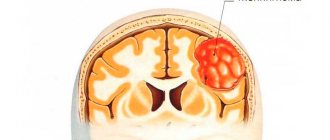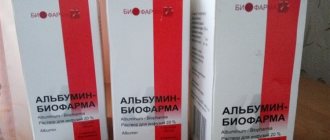What is ICP in a baby?
The pressure inside the skull is regulated with the help of cerebrospinal fluid - this is the medical name for spinal cord fluid. In infants, it significantly affects the further formation of the brain and the harmonious development of the whole organism. If this process is disrupted, intracranial pressure increases, which can negatively affect the physical and mental health of the newborn in the future.
Intracranial pressure in infants (symptoms of its increase can be expressed to varying degrees, depending on the severity of the pathology) normally ranges from 2 to 6 mm. rt. Art. Some children are born with an increase in it, then the indicators return to normal. But if the intracranial pressure in a newborn is consistently high, additional diagnosis of the disease is necessary.
How is ICP treated?
After determining the cause of the disorder, increased intracranial pressure in infants can be treated. When symptoms occur due to the appearance of a tumor in the head, treatment is based on surgery and elimination of the tumor.
The most radical method, surgery, is used only in situations where there is no other alternative. When a child's blood pressure rises, doctors implant a special shunt in the head through which excess cerebrospinal fluid is released. This device lasts for several weeks, then it is removed. In case of complex pathologies, one has to wear a shunt for years.
In addition to surgery, the following treatment methods are used:
- Medicines to reduce ICP.
- Homeopathic remedies.
- Physiotherapeutic procedures.
- Vitamins that normalize blood circulation.
- Sedatives.
- Massage treatments.
Self-medication is not recommended . A personal treatment program is drawn up by a specialist after analyzing the information obtained during research. Parents are not advised to choose their own treatment method. Experts recommend that children with high ICP take walks in the fresh air more often. Breastfeeding has a beneficial effect on the patient's condition.
Traditional medicine without other drugs does not stabilize intracranial pressure in infants. For such purposes, it is recommended to use the following formulations: mulberry decoction, inhalation using bay leaves, lavender oil heated to room temperature, rubbed into the temples, birch sap, nettle decoction.
Medicines should not be replaced with traditional recipes. It is better to organize comprehensive treatment after consulting with a specialist. Children are allowed to make decoctions and inhalations; it is not advisable to use various alcohol tinctures.
It is better not to overdo it with traditional medicine, since the course of the disease will be significantly worsened. Decoctions are prepared from vegetation collected in environmentally safe areas.
To eliminate the possibility of high blood pressure in a newborn, you need to breastfeed him longer, provide the necessary amount of air, take care of the baby, and give him positive emotions.
Congenital and acquired causes of intracranial pressure in infants
Intracranial pressure in infants, the symptoms of which are described below, is divided into congenital and acquired. At birth, it increases if there were pathologies or disturbances in the mother’s normal parameters during pregnancy. Acquired increased intracranial pressure occurs after infections or injuries.
The main causes of increased intracranial pressure:
- Hereditary anomalies;
- Intrauterine infection;
- Taking medications during pregnancy;
- Chromosomal abnormalities;
- Prematurity;
- Heavy metal poisoning;
- Rapid fusion of the fontanelle and the bones of the skull;
- Severe toxicosis;
- Abnormalities of the placenta;
- Oxygen starvation in the baby or entanglement in the umbilical cord;
- Injuries during childbirth;
- Inflammation and infection of the brain;
- Hemorrhages;
- Neoplasms;
- Trauma in infancy.
Common symptoms of increased ICP in children and adults
How does intracranial pressure manifest in infants, young children, adolescents and adults? When indicators increase, characteristic signs of poor health usually appear: memory impairment, absent-mindedness, headaches, visual disturbances, dizziness, instability of blood pressure (persistent increase or decrease in blood pressure), fatigue, depressive states, mood swings, breathing problems, increased skin sensitivity, irritability, drowsiness, lethargy, nausea, vomiting, shortness of breath, pain in the spine.
The most common symptom is a recurring headache. Usually the discomfort is not concentrated on only one side, but covers the entire head at once. With high intracranial pressure, pain often occurs in the morning or at night. Discomfort may increase when coughing, sneezing, or turning the head. Taking analgesics does not eliminate headaches.
The second most common sign of pathology is problems with vision: attacks of blindness, decreased physiological response to light, double vision, unclear outlines of objects, decreased field of vision, fog before the eyes. These symptoms are due to compression of the nerves. With constantly elevated ICP, the shape of the eyeball may change. It protrudes so much that the patient sometimes cannot close his eyelids. Purple circles often appear under the eyes due to congestion of small veins.
Symptoms of intracranial pressure may appear only occasionally in infants or older children. ICP increases briefly during the day in healthy people, for example, with increased physical activity, stress and anxiety, coughing or sneezing, bending down, and so on. But the indicators should quickly return to normal. If this does not happen, doctors talk about a chronic increase in intracranial pressure.
Signs of ICP in a baby
The following are signs of increased intracranial pressure:
- The head exceeds the age norm;
- The eyes may bulge;
- Constant continuous annoying crying;
- During sleep, the child's irises can be seen;
- The upper eyelids are not washed off;
- Stool disorders;
- Constant regurgitation;
- Decreased appetite;
- Refusal of breast milk;
- Moodiness;
- Sleep disorders;
- Swelling of veins on the head;
- The appearance of a fontanelle;
- Trembling of fingers and hands;
- Anxiety;
- Shaking the head in different directions;
- Lethargy;
- Changes in behavior when weather changes;
- Tilting the head back;
- Developmental delay compared to other children;
- Visual impairment - the child may behave like a blind person and not respond to external stimuli;
- The child does not respond to pranks and entertainment, is indifferent to games, and does not smile.
Pressure abnormalities can only be accurately determined in a medical facility.
Veins on the head
Violation of intracranial pressure in infants is accompanied by the fact that the veins on the head may stand out unnaturally and swell. But in some cases this is a variant of the norm. In newborn babies, the subcutaneous fat layer is not yet sufficiently developed, so veins will be visible on the head immediately after birth.
In most cases, this is not a sign of pathology and will decrease over time. But in combination with other symptoms, prominent veins on the head indicate increased intracranial pressure.
Note to parents
If you suspect that the intracranial pressure in a capricious baby is increased, you cannot do without consulting a neurologist. Often, the symptoms of such a condition disappear as they grow older, but the need for examination should not be neglected.
Diagnostic results may indicate that consultation with other specialists is necessary. Therefore, if a recommendation is given to visit an ophthalmologist, you must do so.
If the doctor does not prescribe magnesium or other drugs that can improve the child's condition, parents can achieve positive results through massage or swimming.
To properly care for a baby, you need to spend a lot of effort and learn to easily tolerate frequent whims and crying. The baby especially feels the anxiety and anger of the mother, who does not know how to deal with the newborn’s illness.
Big forehead
One of the signs of cerebral circulatory disorders is a large forehead that is larger than normal. It has a convex shape, and the skull hangs slightly over the back of the head.
Symptoms of increased intracranial pressure in infants are similar to hydrocephalus
Young mothers mistake this pathology for dropsy. Pediatricians claim that the causes of forehead protrusion are the congenital anatomical structure of the bones, hydrocephalus or rickets. Additional examination allows you to exclude pathology or prevent developmental disorders of the baby, if any.
How to measure?
The main method of measuring intracranial pressure in a newborn is a lumbar puncture or direct recording of pressure in the ventricles of the brain.
The following group of additional instrumental methods is also used:
- Neuroimaging of brain structures - computed tomography, magnetic resonance imaging. These studies reveal expansion of the subarachnoid space, changes in the size of the ventricles;
- Neurosonography is an ultrasound examination of the child’s brain, which reveals enlargement of the ventricles and moderate expansion of the subarachnoid space;
- Echoencephaloscopy is a method that uses ultrasound to diagnose a pathological focus in the skull. The method evaluates the displacement of the midline structures of the brain, the deviation of which indicates the presence of cerebral pathology.
- Ultrasound examination of the vessels of the head can reveal retinal angiopathy and congestion in the optic discs.
The results of these studies confirm the presence of intracranial hypertension.
Helpful information
In addition to the listed methods for recording increased intracranial pressure, consultation with specialists is necessary - a neurologist, neurosurgeon, ophthalmologist, pediatrician.
Skull dehiscence
Unlike an adult, the skull bones of a newborn child are mobile. This is necessary in order to pass through the pelvic bones without damage during childbirth. In large children or newborns with a disproportionately large skull, the cranial sutures separate and this is normal.
Over time, the fontanel heals and the bones take their natural position. But if this does not happen, additional examination by a pediatrician is necessary. Possible intracranial pressure disorders or other pathologies.
How to determine intracranial pressure in a baby?
At home, you can determine the increase in pressure visually. If the skull is larger than it should be, and the fontanel does not heal, there is reason to suspect increased intracranial pressure.
An ophthalmological examination, ultrasound and brain tomography help to accurately determine it. Impaired muscle tone and reaction to stimuli are also indirect signs of increased pressure inside the child’s skull.
Ophthalmoscopic examination
With intracranial pressure, intraocular pressure also increases, which can be detected by an ophthalmologist. If it increases, visual disturbances occur, the eyeballs protrude from the orbits, pain occurs when pressing on the eyeball, or the blood vessels begin to turn red and burst.
An ophthalmologist’s conclusion about increased intraocular pressure is a reason to check intracranial pressure. Especially if there are signs of an increase in it in a newborn baby.
Visual diagnostic methods
These include:
- Head circumference measurement;
- The presence or absence of swollen veins, a non-overgrowing fontanel;
- Muscle tone study;
- General assessment of the condition or behavior of the infant.
At birth, a newborn’s head has a circumference of about 34 cm. With normal development, it increases by 1 cm per month and reaches 46 cm by one year. Sometimes the doctor changes individual parameters, depending on the size of the child. An enlargement of the head by more than 2 cm is a sign of pathology and a reason for additional examination.
If the fontanel does not heal by the age of one year, and the bones of the skull do not return to their normal position, this is a sign of increased intracranial pressure.
Restless behavior, sleep disturbances, hyperactivity and regurgitation are indirect symptoms of increased pressure inside the skull. If there are no other reasons, most likely this is the problem.
Impaired muscle tone is a sign of pathology. Together with pathological signs of increased intracranial pressure, an accurate diagnosis is made.
Redness of the eyes, pain when pressing on the eyeball and the inability to close the eyelids indicate possible problems with intracranial pressure.
If the forehead is too large, the head is disproportionately larger than normal, there are signs of developmental delay - slower reactions, anxiety, then this is a reason to be wary. Most likely, intracranial pressure will be higher than normal.
Lumbar puncture
Prescribed after meningococcal infections, encephalitis and inflammation of the meninges. If there is a suspicion of increased intracranial pressure, the doctor will refer you to donate cerebrospinal fluid for examination. A sample of the cerebrospinal fluid is taken through a special sterile needle and analyzed.
The study reveals hidden infections and the general state of the child’s immunity. The state of the protein fluid is assessed and intracranial pressure is determined. The method is prescribed by a pediatric neurologist or neurosurgeon.
Along with this study, a general blood test for leukocytes and neutrophils is prescribed. Based on their condition and correlation, latent infections and inflammatory diseases, which have become a possible cause of high intracranial pressure in a newborn, are determined.
MRI
Intracranial pressure in infants, the symptoms of which were discovered by the pediatrician and the child’s parents, is checked using MRI. Tomography is performed with a closed fontanel; pediatricians prescribe this study after a year, in some cases earlier.
Pediatric MRI is prescribed in rare cases, since this study requires a calm state of the newborn, and this is not always possible. Therefore, up to a year, computed tomography is prescribed only for severe pathologies or after infectious diseases, after which an increase in intracranial pressure is likely as a complication.
This type of study may have contraindications. Being in a closed space is in itself painful for a child, so it can not only negatively affect his psyche, but also give the wrong result under the influence of fear.
Therefore, MRI in childhood is prescribed extremely rarely and is replaced by computed tomography of the brain. During this study, the brain is exposed to X-rays, so it is not considered the safest and is prescribed only as a last resort.
Neurosonography
Another name for the research method is ultrasound examination of the brain. The most painless and frequently prescribed procedure with no contraindications.
Allows you to identify the abnormal structure of the skull, the size of the ventricles of the brain, changes in the structure of which can be the cause of high intracranial pressure.
Echoencephalography
An outdated diagnostic method used in extreme cases. This method is used only in rural clinics or small provincial towns. Using special wiring, the state of the brain vessels is examined by their pulsation.
This method does not allow making an accurate diagnosis - it only helps to determine possible negative changes in the structure of the brain and blood vessels.
In modern diagnostics, echoencephalography is not used, since the study does not always give an accurate result.
Causes of intracranial hypertension in children
Intracranial pressure, as well as blood flow, is a highly variable category. Its levels may rise and fall throughout the day. Babies have a number of conditions that can lead to an increase in ICP: screaming, crying, strong emotions. This is especially clearly observed in infants, in whom crying often leads to swelling of the fontanel - this occurs due to increasing pressure.
Most often, insignificant fluctuations in ICP are a completely natural phenomenon inherent in children and adults. But in some cases, high blood pressure is quite high, and sometimes for a long time, which can even destroy the brain. In such cases, experts assume the presence of intracranial hypertension.
An increase in ICP in a child can be short-term (due to low atmospheric pressure or, for example, during ARVI), and long-term (for serious reasons).
The causes of long-term disturbances in the balance of cerebrospinal fluid and cerebral matter may be:
- traumatic brain injury (during childbirth, bruises and falls);
- infections (encephalitis and meningitis);
- pathology of the walls of blood vessels, leading to disturbances in the circulation of cerebrospinal fluid;
- blockage of the exit route of cerebrospinal fluid (for example, due to a brain tumor); gHypoxia (oxygen starvation);
- intoxication (poisoning of various types);
- immaturity of the nervous system (a common cause in children under one year old).
Sometimes, for unknown reasons, an increase in intracranial pressure occurs. This is called benign (idiopathic) intracranial hypertension
Neurologists and specialists in other fields often encounter cases of benign intracranial hypertension, considered as a compensatory mechanism observed in various physiological conditions, and not as a disease. Sometimes this variant of intracranial hypertension is considered a “false brain tumor.”
The peculiarity of this form is the reversibility of its symptoms, as well as a hidden favorable course. As a rule, the establishment of a benign form occurs when specialists cannot recognize the etiological factor that caused its development. Benign intracranial hypertension often develops in children after discontinuation of glucocorticosteroid drugs, as well as as a side reaction of long-term use of tetracycline antibiotics.
Endocrine abnormalities potentially associated with idiopathic intracranial hypertension include adrenal dysfunction and Addison's disease, hypothyroidism or hyperthyroidism, and hypocalcemia due to vitamin D deficiency.
Obstructive sleep apnea has been shown to increase intracranial pressure and may be a secondary cause of intracranial hypertension.
Signs of increased intracranial pressure in a child
Symptoms include a fairly wide range of manifestations, so this pathology can occur differently in each child. In addition, the degree of increase in pressure in the skull plays a large role in the development of clinical symptoms.
The most common symptom is headache of varying degrees of intensity.
A characteristic symptom is the appearance of heaviness and severe headache at night, which has its own explanation. In the supine position, the production of cerebrospinal fluid increases, accompanied by a slowdown in its absorption.
At the peak of high intracranial pressure, the child experiences severe nausea and vomiting, and these conditions are not associated with eating the day before. Even after vomiting, the child’s well-being does not change for the better, which is also a defining sign.
A slight increase in intracranial pressure over a long period of time disrupts the psycho-emotional balance of the child, which is expressed in increased excitability, bursts of irritability and rapid fatigue, even without strong physical stress.
Neurologists note that children with intracranial hypertension have complaints characteristic of vegetative-vascular dystonia, expressed in the form of a sharp change in blood pressure, increased sweating, a feeling of rapid heartbeat and short-term loss of consciousness.
Periods of exacerbation have a clear dependence on changing weather conditions. Therefore, intracranial hypertension can be classified as a meteorological pathology.
A peculiarity of the course of intracranial hypertension in infants is a long latent period when parents do not notice any symptoms that allow them to suspect the presence of this pathology in their child. This is due to the characteristics of the child’s skull bones—unovergrown fontanelles.
However, with a noticeable increase in intracranial pressure, a number of specific signs appear in the child in the form of a high-pitched cry, sudden swelling of the skin over the fontanel with pulsation, increased irritability, vomiting and varying degrees of impairment of consciousness. During a period of high blood pressure, parents note changes in the child’s behavior, which is expressed in a rapid change from obvious anxiety to lethargy.
How to treat ICP in an infant?
Intracranial pressure in infants, the symptoms of which have made it possible to accurately diagnose, is treated depending on its cause, since it is not a disease, but a symptom of pathology.
If the cause of intracranial pressure is oxygen starvation during childbirth, sedatives and water procedures are prescribed. Gradually, the consequences of a lack of oxygen are eliminated and intracranial pressure normalizes.
Actovigin and glycine are prescribed as auxiliary agents. Actovigin injections normalize intracranial pressure, and children's massage is prescribed as an additional treatment. It activates blood circulation, oxygen supply to the brain, helps normalize the development of the child and improve overall muscle tone.
If the accumulation of cerebrospinal fluid becomes dangerous, surgery is prescribed. The operation is performed under general anesthesia, a certain amount of cerebrospinal fluid is surgically removed and after this the indicators return to normal. If a tumor is present, surgery is also prescribed. By removing it surgically, the doctor normalizes intracranial pressure.
But surgical intervention is prescribed extremely rarely. Most often, drug treatment is sufficient. After completing the course, the doctor observes the child’s condition for some time and repeats the studies. And even if the diagnosis is removed, the child remains registered with a neurologist for a year or several years.
To normalize blood pressure, medications are prescribed:
- Magnesia;
- Glycine;
- Glycerol.
In the absence of pathologies, doctors advise lowering blood pressure by strengthening the baby’s overall endurance. Baths, baby massages, and walks in the fresh air help.
It is recommended to massage the child’s entire body to normalize blood pressure and avoid stagnation of blood or cerebrospinal fluid . In some children, the pressure inside the skull increases with colic, bowel movements, and weather changes, and this is the norm. With proper development, after a year, intracranial pressure no longer rises.
What happens with increased ICP at different ages
The space inside the cranium is filled with the brain, cerebrospinal fluid and blood. Fever (cerebrospinal fluid) circulates to the brain, which creates a certain pressure on the internal walls. As the amount of blood or cerebrospinal fluid or the size of the brain increases, the pressure increases sharply because the skull cannot stretch. A persistent increase in ICP is a symptom of serious health problems.
Intracranial pressure in children under one year of age usually increases due to complications during intrauterine development and childbirth: insufficiency of placental function, severe late toxicosis, entanglement of the umbilical cord, prolonged labor. This leads to oxygen starvation, that is, hypoxia develops. After birth, the child begins to breathe on his own. The pressure (in most cases slightly increased due to complications) levels out with age, and the child grows and develops normally.
Magnesia
Magnesium sulfate affects the state of intracranial pressure. Prescribed by injection, it has a sedative, antispasmodic, sedative and anticonvulsant effect on the body.
It is used intramuscularly or intravenously. Intracranial pressure decreases within an hour, but this drug can cause diarrhea, headache, and a sharp decrease in blood pressure.
In some cases, the drug causes drowsiness. But if after the injections there are convulsions, anxiety and a clear deterioration in the general well-being of the newborn, it is replaced with an analogue.
Magnesia dilates blood vessels and lowers high intracranial pressure, but it is contraindicated for children with low blood pressure.
Evgeny Komarovsky opposes the use of this drug. In his opinion, the administration of magnesia is ineffective or can traumatize the child’s psyche, since the drug is very painful for him.
But most pediatricians prescribe magnesia intramuscularly or intravenously, as it calms the nervous system, relieves overexcitation and normalizes blood pressure. In some cases, the drug can cause depression of the respiratory center, so if the lips turn blue, shortness of breath and breathing problems occur in infants, the drug should be discontinued.
Glycerol
A drug for lowering blood pressure based on glycerin. It removes excess fluid, preventing it from stagnating in the body. It has a mild diuretic effect, does not cause allergies and reduces the volume of cerebrospinal fluid.
Glycerol lowers intraocular pressure. The drug has a calming effect on the body, but can cause bowel problems. Therefore, it is prescribed by pediatricians in extreme cases, but, unlike analogues, Glycerol does not have pronounced side effects and does not provoke lethargy, apathy and drowsiness. This drug acts slowly, but stabilizes intracranial pressure and is not addictive.
| Glycerol | The cost in Moscow and St. Petersburg is 18 rubles. | Price in the regions – 13 rubles. |
| Magnesia | 14 rub. | 18 rub. |
Prognosis, complications
In most cases, in the absence of pathologies, intracranial pressure returns to normal on its own or develops into vegetative-vascular dystonia, which can be successfully treated with the right diet and a reasonable alternation of work and rest.
A salt-free diet or limiting the use of salt and spices helps normalize blood pressure. With increased intracranial pressure, it is important to control the child’s weight and prevent obesity.
High blood pressure in itself is not a disease; it does not affect the development of the child in any way, unless there are no other pathologies in the body. The main treatment should be directed at them, after which the pressure indicators themselves will return to normal.
Intracranial pressure in infants goes away on its own by the age of one year. But if symptoms remain after a year, it is recommended to resume the examination and take appropriate measures.
Article design: Mila Friedan











